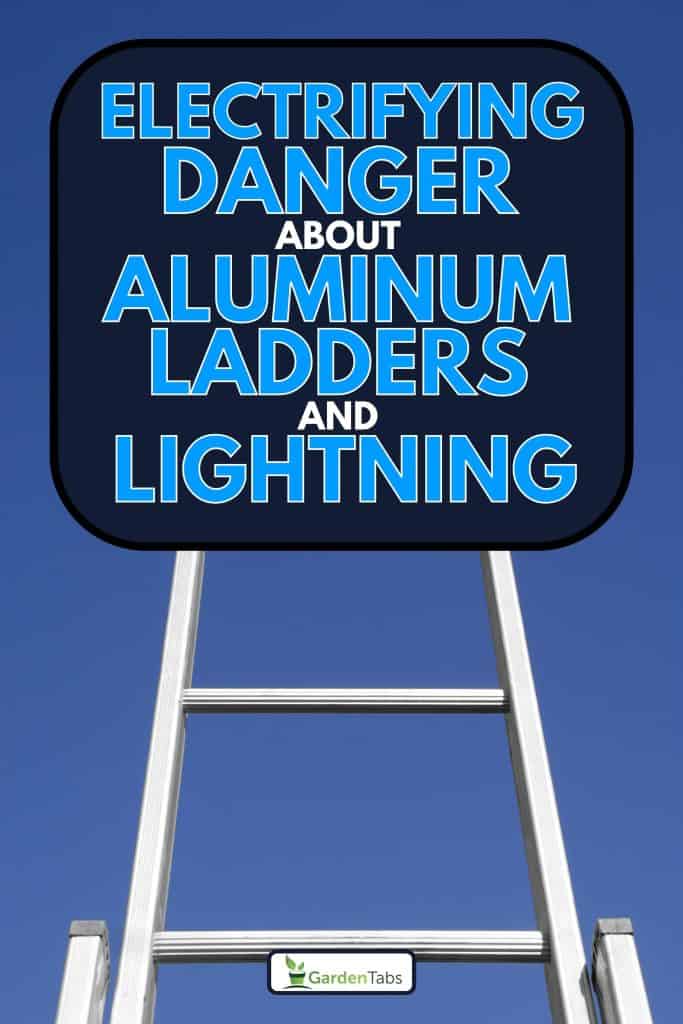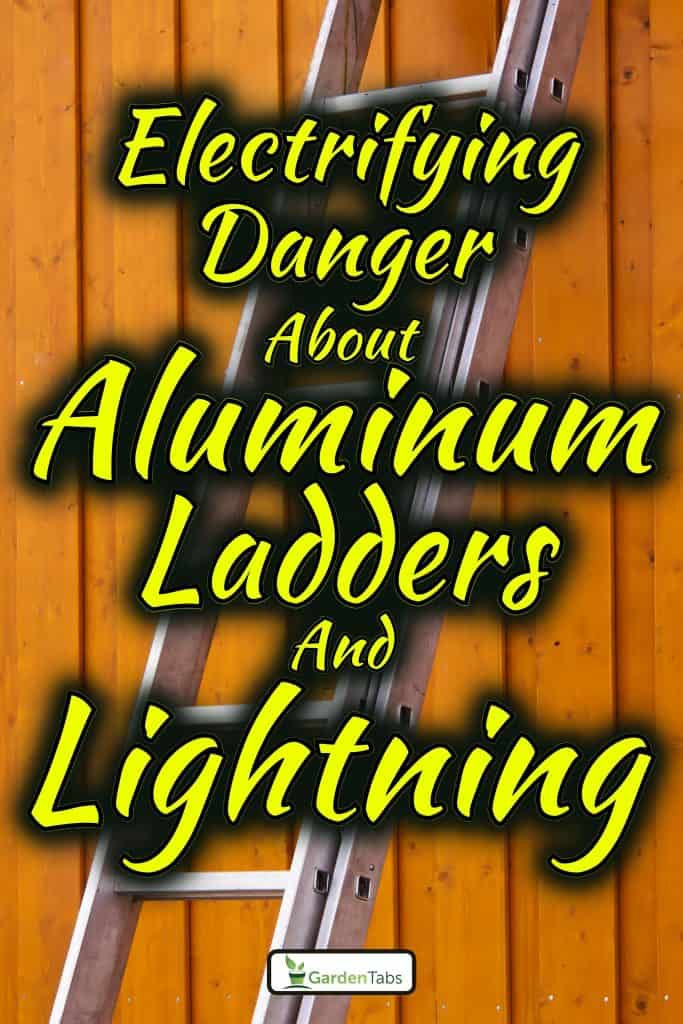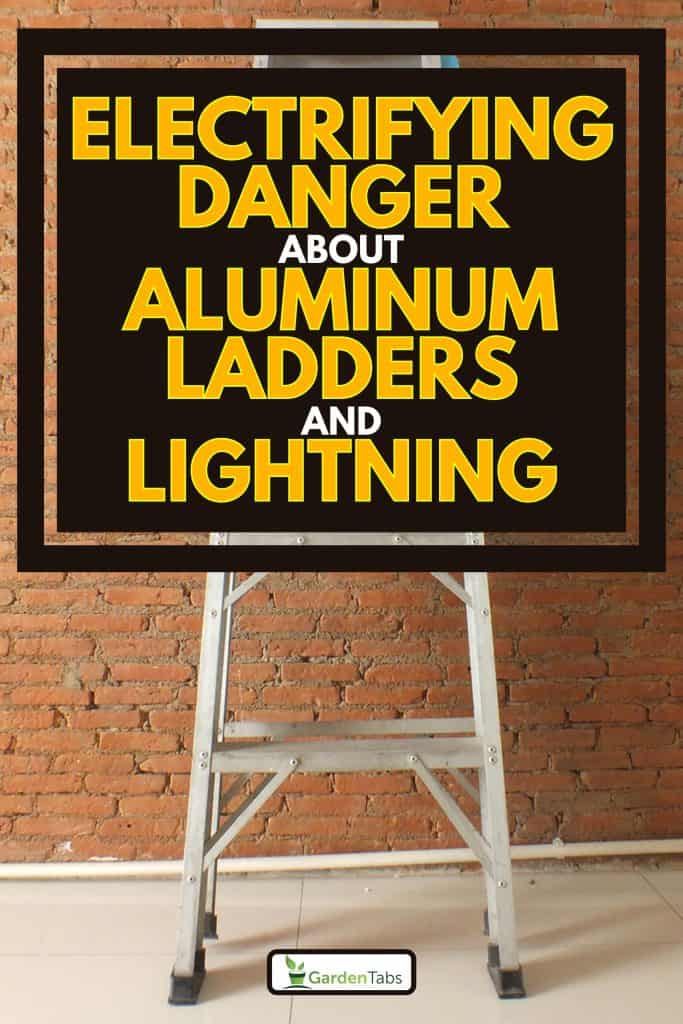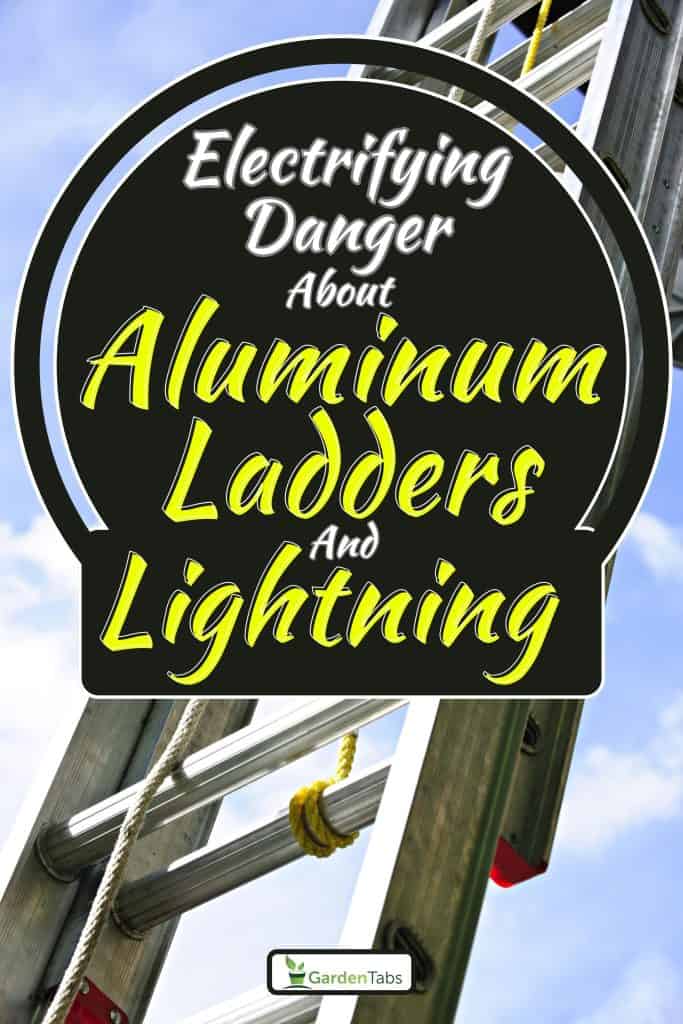Have you ever wondered whether an aluminum ladder is safe to use during a storm?
Lightning can indeed strike an aluminum ladder, although it's less likely to happen than with a steel ladder.
Aluminum has high electrical conductivity, which means that it can easily conduct electricity.
If you must use an aluminum ladder during a storm, there are certain precautions you can take to minimize the risks.
In this post, we'll provide guidelines to help you reduce the chances of being struck by lightning and stay safe. Keep reading to learn more.
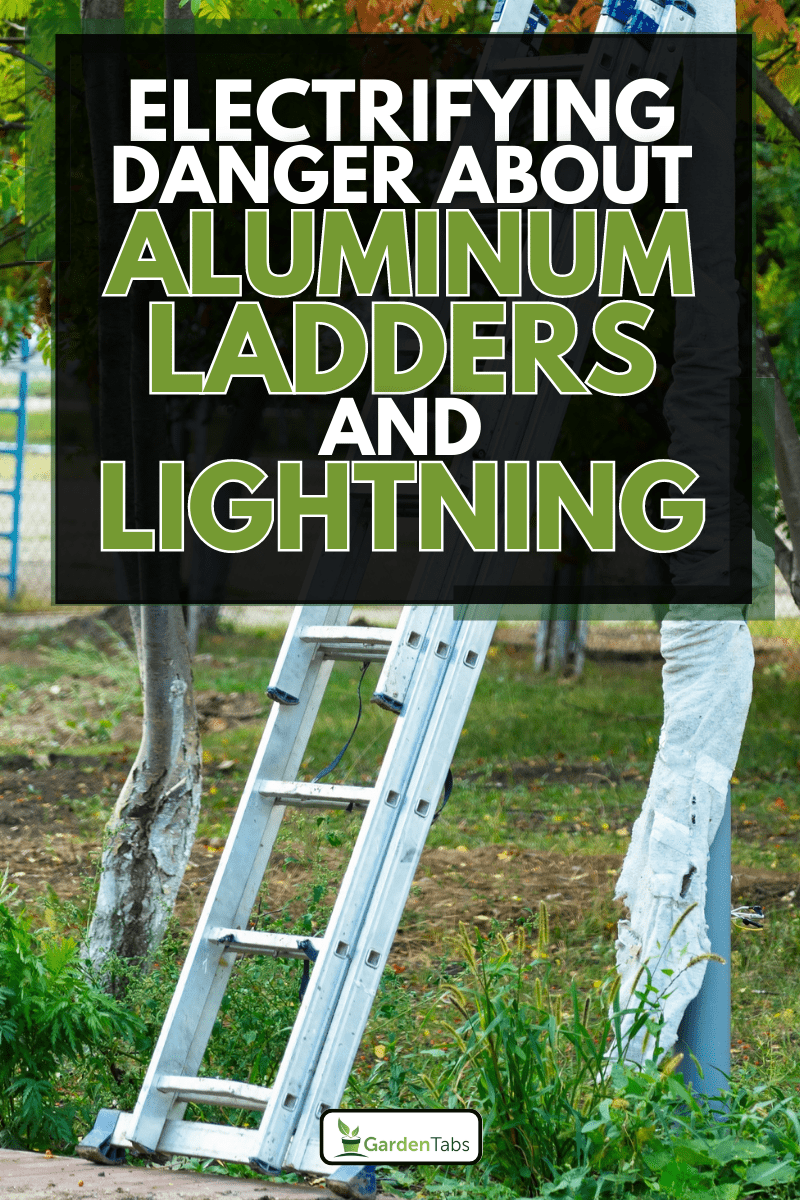
Can Lightning Strike an Aluminum Ladder?
As we mentioned, aluminum is a conductor of electricity, which means that it can carry electrical current.
If lightning strikes the ladder, the electrical current can flow through the ladder and into the person using it, causing serious injury or even death.
It's important to note that the risk of a lightning strike is higher if the ladder is placed near other conductive materials, such as metal gutters or downspouts.
If you must use an aluminum ladder during a storm, make sure to keep it at least 10 feet away from trees, buildings, and other conductive objects. This will help to reduce the risk of a lightning strike.
Another important thing to keep in mind is that you should never touch the conductive rails of an aluminum ladder during a storm.
This will help to prevent electrical current from flowing through your body if the ladder is struck by lightning.

When To Avoid Using an Aluminum Ladder
Although aluminum ladders are lighter and more convenient to use than steel ladders, they can still pose potential dangers.
Here are some situations where you should avoid using an aluminum ladder:
During a thunderstorm
If there is any chance of thunderstorms in your area, it's best to avoid using an aluminum ladder altogether. Even if the storm is far away, lightning can strike from miles away and still pose a danger.
Near power lines
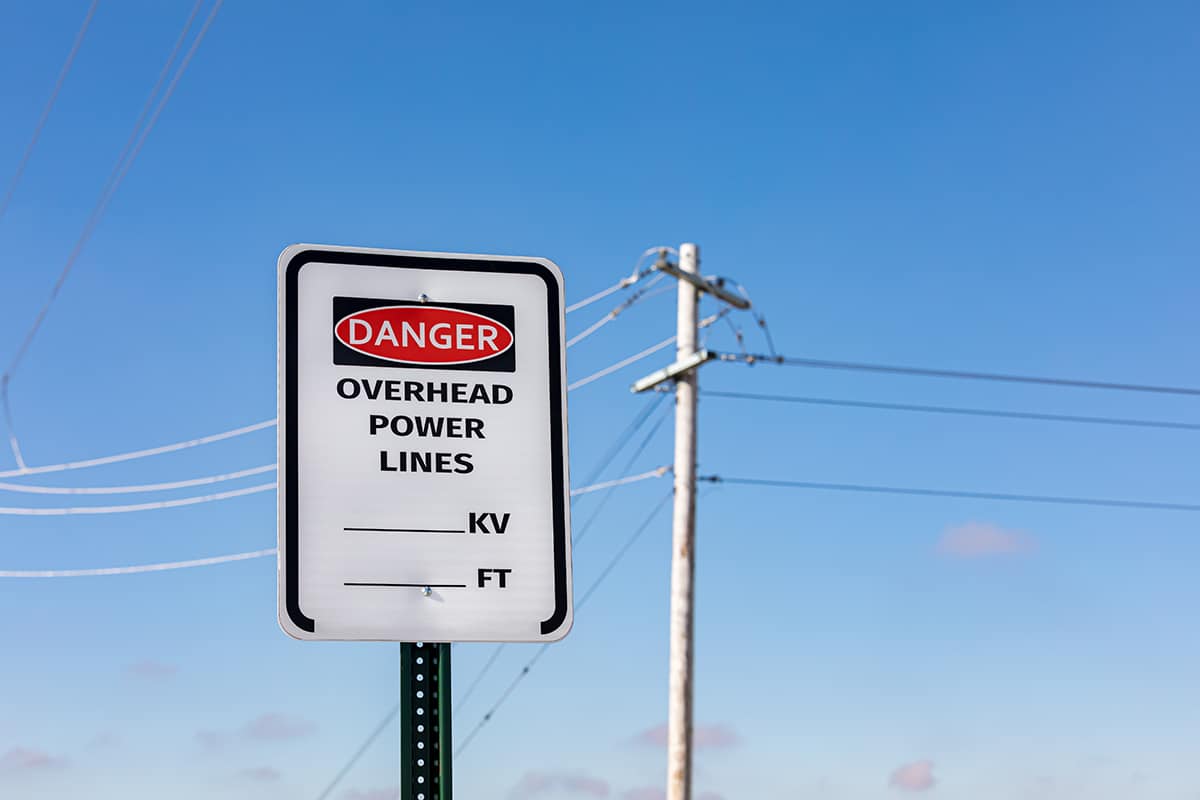
Never use an aluminum ladder near power lines or electrical equipment. If the ladder comes into contact with a live wire, it could electrocute you.
In wet or damp conditions
Wet or damp conditions can increase the risk of electrical shock. If you must use an aluminum ladder in wet conditions, make sure it has non-conductive feet and is placed on a dry surface.
On uneven or unstable surfaces
Using an aluminum ladder on an uneven or unstable surface can cause it to tip over, leading to serious injuries. Always make sure the ladder is placed on a level and stable surface before climbing it.
What Type of Ladders Do Not Conduct Electricity?
When it comes to ladder safety, one of the most important factors to consider is whether or not the ladder can conduct electricity.
Here are some types of ladders that do not conduct electricity:
Wooden Ladders
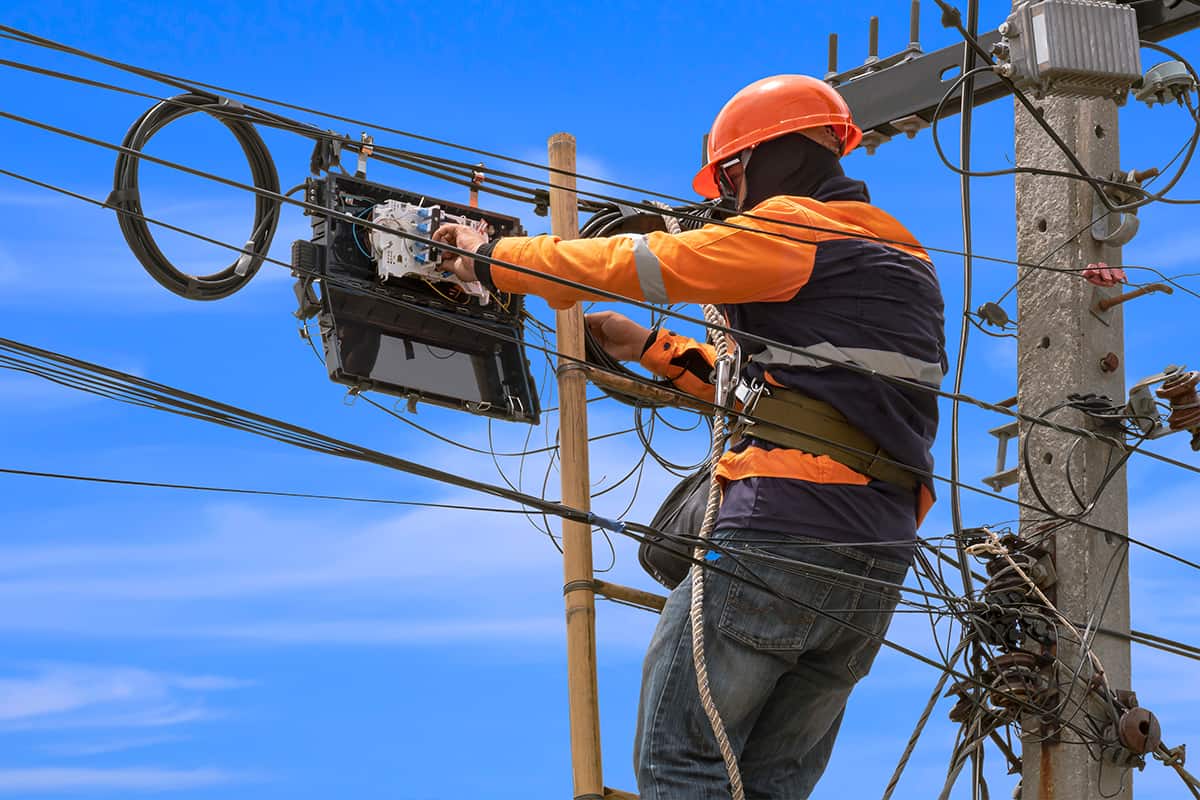
Wooden ladders are a popular choice for many workers because they do not conduct electricity. This makes them a great choice for outdoor work or when working around electrical equipment.
However, wooden ladders can be heavy and may not be as durable as other types of ladders.
Fiberglass Ladders
Fiberglass ladders are another great choice for workers who need a ladder that does not conduct electricity.
Fiberglass is a non-conductive material, which means it will not conduct electricity, making it a safe choice for electrical work.
Fiberglass ladders are also lightweight and durable.
When choosing a ladder, it is important to consider the type of work you will be doing and the environment in which you will be working.
Always choose a ladder that is appropriate for the job and make sure to follow safety guidelines and recommendations.
Ladder Safety Tips
When it comes to using ladders near power lines, it is important to choose the right ladder for the job.
Using ladders with non-conductive side rails is safer but not a guarantee of protection from an energized power line.
This means that ladders made of metal should be avoided when working around power lines.
Fiberglass ladders are the best option when working around electricity.
It is also important to consider the size of the ladder. According to Safety+Health Magazine, ladders should be carried horizontally and in a lowered position when moving them.
If a ladder is too long for one person to carry, it is important to ask for help.
Other factors to consider
In addition to the material and size of the ladder, there are other factors to consider when working around power lines.
It is important to inspect ladders before and after each use to ensure that they are in good condition and free of defects.
Ladders should never be leaned against a tree or tree branch that is in contact with or near a power line.
When using a ladder near power lines, it is important to follow the 1:4 rule.
This means that for every 4 feet between the ground and the upper point where a ladder is resting, the feet of the ladder should be set out one foot from the wall or structure.
This can help to prevent the ladder from coming into contact with power lines.
Final Thoughts
Overall, the greatest hazard of using an aluminum ladder is its conductivity.
It is essential to be aware of the potential hazards and take the necessary precautions before using an aluminum ladder.
By doing so, you can ensure your safety and prevent any accidents or injuries from occurring.
Check out some of our previously written content here:

